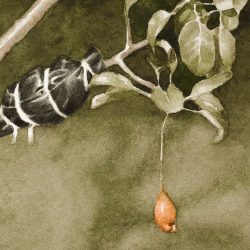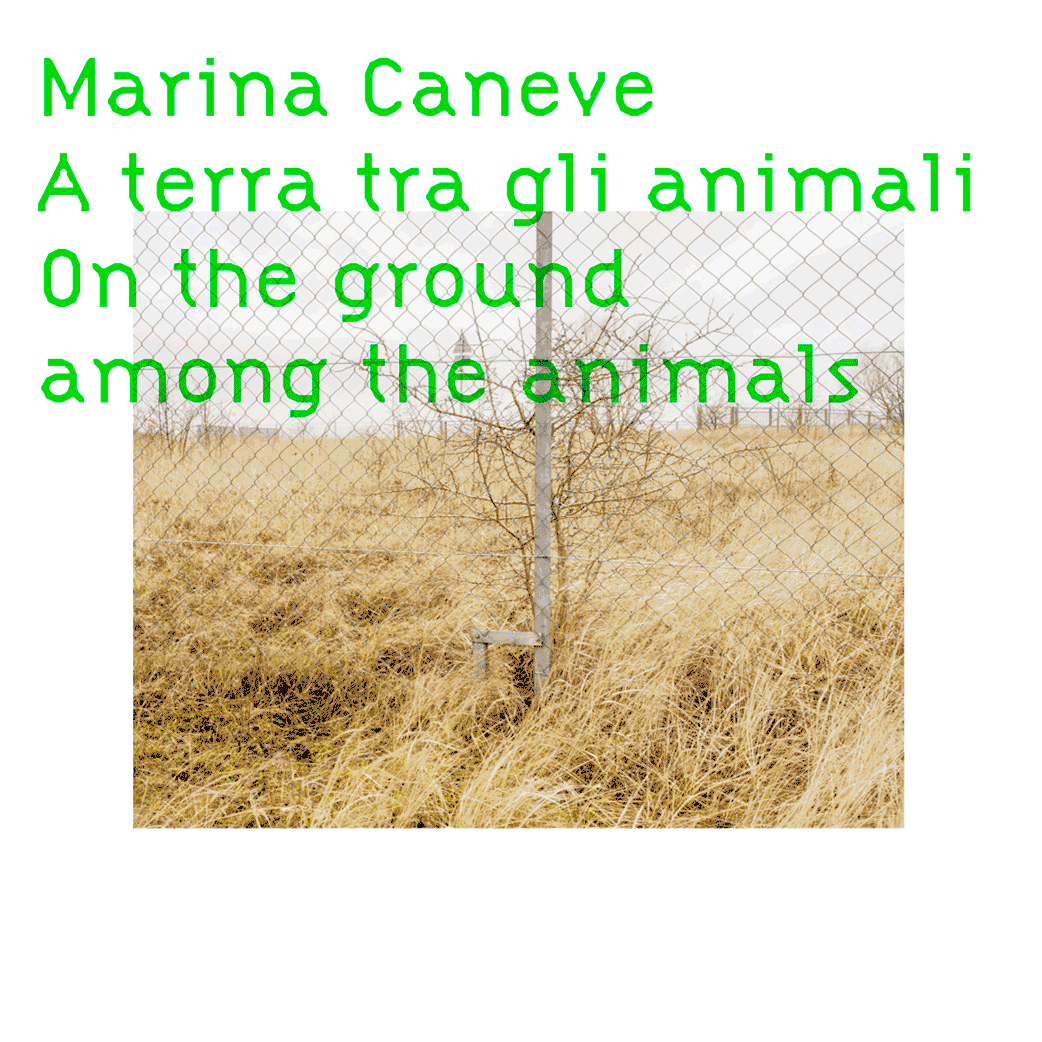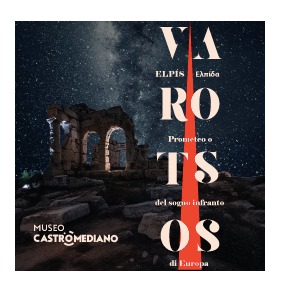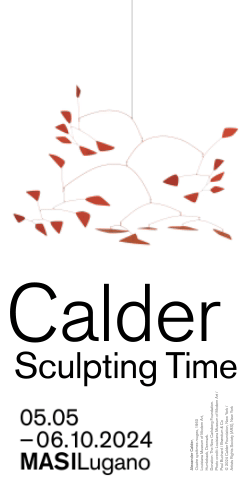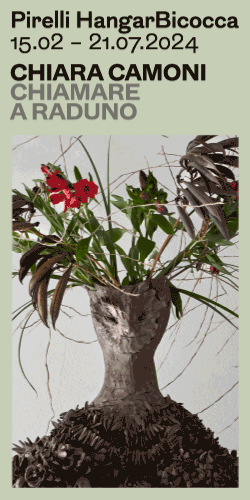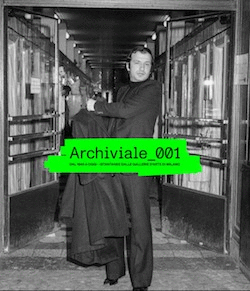[nemus_slider id=”49981″]
English interviews below
Inaugura domani il Festival dedicato alle strette relazioni tra cinema e arte. Giunto alla sua ottava edizione, Lo Schermo dell’Arte (17/22 novembre 2015) cresce ogni anno di più, aumentando sia come numero di visitatori che come prestigio dato dai tanti ospiti. Nell’intervista che segue di Silvia Lucchesi, direttrice del Festival, ci espone gli highlights dell’edizione 2015. Martina Odorici ha posto anche alcune domande a Leonardo Bigazzi, curatore della mostra VISIO. Next Generation Moving Images, ospitata dal 17 novembre al 20 dicembre 2015 a Palazzo Strozzi – Strozzina. Seguono anche alcune domande al nuovo direttore di Palazzo Strozzi, Arturo Galansino, in merito alla collaborazione tra Lo Schermo dell’Art e il museo fiorentino.
ATP: E’ da un po’ di anni che seguiamo il festival, e la domanda “di rito” non può mancare: quali sono le novità dell’edizione 2015 de Lo Schermo dell’Arte?
Silvia Lucchesi: Il programma di questa ottava edizione segue la tradizionale formula dello Schermo dell’arte, quella di presentare film realizzati da artisti, documentari sull’arte contemporanea, approfondimenti e incontri con gli autori, insieme a progetti di formazione. Nella settimana dal 17 al 22 novembre, oltre ai film selezionati (più di 30), la maggior parte dei quali sono prime italiane, ci sono anche molti appuntamenti che si tengono fuori della sala cinematografica: conversazioni tra artisti e critici come quelle tra Runa Islam e Riccardo Venturi (in collaborazione con il dipartimento SAGAS dell’Università di Firenze), tra Martial Raysse, autore oltre che di dipinti e sculture di molti film sperimentali, e Martin Bethenod (in collaborazione con Palazzo Grassi-Punta della Dogana), tra Antje Ehmann e Erika Balsom sull’opera di Harun Farocki; workshop e seminari del programma VISIO; due importanti momenti con i quali si concluderà il semestre di lavoro di Feature Expanded – European Art Film Strategies, nuovo progetto di formazione ideato con HOME/Manchester, diretto da Sarah Perks e Leonardo Bigazzi (sostenuto da Creative Europe/MEDIA), dedicato ad artisti che vogliono realizzare il loro primo lungometraggio. Si tratta di un pitch di produzione per presentare i progetti degli artisti partecipanti, tra i quali Yael Bartana, ad un pubblico di possibili produttori e distributori cinematografici, e una tavola rotonda internazionale sui nuovi modelli di distribuzione per i film d’artista; e, per la prima volta, frutto del lavoro di tre edizioni di VISIO, la mostra VISIO Next Generation Moving Images curata da Leonardo Bigazzi, realizzata in collaborazione con la Fondazione Palazzo Strozzi. Tutto questo costituisce Lo Schermo dell’Arte 2015, un progetto sempre più strutturato in vari momenti complementari e integrati l’uno nell’altro. Quest’anno il Festival ha assunto una complessità e un’articolazione maggiori rispetto al passato, è nel suo insieme un progetto curatoriale unico nel panorama italiano e uno degli interlocutori nel dibattito internazionale sulle moving images, il linguaggio oggi più vivo della produzione visiva contemporanea.
ATP: Quali sono i temi principali su cui vi siete concentrati? O le tematiche generali che più di altre emergono dalle opere filmiche selezionate?
SL: Non ci siamo concentrati su nessun tema in particolare perché la scelta dei film è una selezione tra le migliori produzioni recenti, ma ogni anno nascono come per magia analogie, vicinanze, echi e rimandi tra i film presentati. Quest’anno inauguriamo il Festival con Francofonia di Alexandr Sokurov, un film magnifico che rivendica con grande forza l’identità culturale dell’Europa, un atto d’amore per l’Arte e la Storia del nostro continente, emblematico in questi tempi di terribili contrapposizioni politiche e sociali. Nel programma c’è un altro film non dissimile nella tematica, l’enigmatico e bellissimo Human Mask di Pierre Huyghe: se Sokurov parla della fine di un’epoca, Huyghe mette in luce il cortocircuito logico, mentale ed emotivo creato dall’ambiguità di un mondo irrimediabilmente artificiale e post-umano, giunto al punto di non ritorno. Ci sono poi film più strettamente legati alla grammatica cinematografica e al significato della visione. Per esempio i due film di Runa Islam Empty the Pond to Get the Fish e Pièce unique, nei quali l’artista utilizza lo slow motion per richiamare l’attenzione sulla rappresentazione visiva e In Waking Hours di Sarah Vanagt e Katrien Vanagt nel quale viene ricostruito un esperimento ottico ripreso da un antico trattato di medicina utilizzando l’occhio di una mucca come una lente attraverso la quale guardare la realtà circostante. Un altro film sull’atto del vedere tra realtà e finzione è Quantum degli italiani Flatform, dove la ripresa dal vero viene sottoposta a un complesso lavoro di postproduzione. Altra opera sul linguaggio delle immagini in movimento, in particolare quelle delle animazioni computerizzate e dei video game, è lo straordinario Parallel I-IV di Harun Farocki, che verrà proiettato per la prima volta in Italia, uno degli ultimi lavori del grande maestro del cinema europeo scomparso a luglio scorso. Nel programma non manca la riflessione sull’attualità con Common Assembly del collettivo di architetti palestinesi DAAR che, partendo dallo studio dell’edificio destinato nel 1996 a essere sede del Parlamento palestinese a sud di Gerusalemme, realizzano un’opera sulla condizione di extraterritorialità geografica, politica e sociale di una comunità; o Frame by Frame che segue la storia di 4 fotografi afgani che raccontano con grande passione e impegno un paese nuovo, all’indomani della caduta del regine talebano.
C’è poi un buon numero di opere di artisti italiani, come i quattro film di Francesco Bertocco, Giuseppe Fanizza, ZimmerFrei e Yuri Ancarani realizzati per il progetto pilota di Artevisione ideato da careof e Sky Italia, The Show MAS Go On di Rä di Martino girato nei grandi magazzini MAS a Roma all’imminenza della loro chiusura, e Preferisco lo stupore, ultimo film di Andrea Barzini, l’autore di Italia-Germania 4-3, ironico divertissement sulla creazione di un’opera d’arte. Nella maggior parte dei casi, i film che presentiamo non hanno una distribuzione italiana. Lo spettatore potrà divertirsi a costruire il proprio percorso di visione all’interno del programma, seguendo il proprio interesse o la propria curiosità.
ATP: Quest’anno anche una mostra accompagna il festival; uno spazio ancora maggiore che la città di Firenze riserva alla settima arte?
SL: L’idea della mostra è legata al lavoro triennale del progetto VISIO ed è l’evoluzione degli screening program con le proiezioni monocanale dei video dei giovani artisti partecipanti al workshop che abbiamo proposto nelle edizioni scorse del Festival. In questi tre anni abbiamo potuto allargare e approfondire la riflessione sulla produzione di moving images di una giovane generazione di artisti che operano in Europa, grazie alla partecipazione di molti curatori, critici e artisti che sono venuti a Firenze. E una mostra avrebbe potuto restituire la molteplicità di approcci e formati con cui i giovani artisti oggi lavorano. Abbiamo proposto alla Fondazione Strozzi il progetto per gli spazi della Strozzina e abbiamo trovato un immediato interesse da parte del nuovo direttore Arturo Galansino e del suo staff. La mostra, che si protrarrà oltre le date del festival, fino al 20 dicembre, e sarà a ingresso gratuito, è un progetto totalmente condiviso con Palazzo Strozzi, risultato di una sinergia di cui siamo estremamente felici e che speriamo possa continuare anche in futuro.

Qualche breve domanda anche a Leonardo Bigazzi, curatore di VISIO, un programma complesso che quest’anno comprende anche una mostra che accompagnerà la rassegna.
ATP: E’ la prima volta che una mostra viene inclusa nel programma del festival. Qual’è stata la genesi della mostra e come si è sviluppata questa collaborazione con Palazzo Strozzi?
Leonardo Bigazzi: Come ha già detto Silvia Lucchesi questa mostra è il risultato di un percorso iniziato nel 2012 con la prima edizione di VISIO e che quest’anno ha trovato nella Fondazione Palazzo Strozzi un interlocutore attento e pronto a sostenere il progetto. Mi preme quindi ringraziare anche gli altri partner che ci hanno sostenuto in tutti questi anni, tra questi l’Ambasciata del Regno dei Paesi Bassi in Italia, l’Institut français Firenze, il Deutsches Institut Florenz e Cecchi, e la rete di 13 istituzioni internazionali partner del progetto. Infine ci tengo a segnalare anche la partnership e il sostegno della Seven Gravity Collection, collezione privata italiana interamente dedicata alle opere video di artisti contemporanei, con la quale abbiamo sviluppato il VISIO Young Talent Acquisition Prize. Il riconoscimento è nato per favorire il collezionismo di video installazioni, film e video d’artista, con l’acquisizione da parte della Collezione di un’opera di uno degli artisti partecipanti alla mostra. Il vincitore sarà annunciato subito prima del Festival.
ATP: Cosa verrà presentato in mostra?
LB: Saranno esposte dodici opere di altrettanti artisti internazionali selezionati per la IV edizione di VISIO. European Programme on Artists’ Moving Images. Gli artisti in mostra sono: Brud, Alessandro Di Pietro, Rebecca Digne, LucFosther Diop, Hoël Duret, Roberto Fassone, Giorgi Gago Gagoshidze, Émilie Pitoiset, Janis Rafa, Anike Joyce Sadiq, Dan Walwin, Baha Görkem Yalim. La mostra intende restituire la molteplicità di codici e tematiche di una generazione di artisti che si muove tra realtà e finzione affrontando questioni socio-politiche, lavorando sulla natura delle immagini digitali o arrivando a rimettere in discussione la struttura stessa del linguaggio cinematografico. Allo stesso tempo questa rappresenta un’occasione per riflettere sulle modalità di fruizione delle diverse tipologie di opere video nello spazio espositivo. Le opere selezionate rappresentano quindi la varietà di mezzi e formati utilizzati nella pratica video contemporanea: dall’analogico al digitale, dai video e film monocanali su monitor o proiettati su schermi fino alle video istallazioni più complesse.
La mostra mantiene inoltre una forte identità laboratoriale, e alcuni spazi espositivi sono dedicati a seminari, tavole rotonde, incontri e laboratori, in parte aperti al pubblico, che continueranno fino alla fine della mostra. Tra gli ospiti confermati: Andrea Bellini, direttore del Centre d’Art Contemporain di Ginevra, Erika Balson, lecturer al King’s College di Londra, Filipa Ramos, co-curatore di Vdrome e editor in chief di Art Agenda, e Jason Wood, Direttore Artistico (Film) a HOMEmcr a Manchester.
ATP: L’arte contemporanea si orienta (e ritorna) sempre più spesso verso l’uso di video e film. Come spiega questa tendenza?
LB: Io credo che sia in parte dovuto a una questione di opportunità e in parte alla forza e alle potenzialità del linguaggio video. La transizione completa da analogico a digitale ha generato tecnologie video sempre più sofisticate ma allo stesso tempo disponibili su dispositivi portatili come cellulari o tablet. Questi anni hanno visto inoltre la diffusione di internet come immenso archivio da cui attingere e come canale di distribuzione delle opere degli artisti. Il video rimane uno dei mezzi più efficaci e immediati per raccontare la realtà che ci circonda e la presenza del cinema d’artista nelle grandi mostre internazionali, così come nei Festival di cinema, è in continuo aumento. Gli artisti vedono in questi cambiamenti un’enorme opportunità per raggiungere un pubblico molto più vasto rispetto a quello che frequenta gli spazi dell’arte contemporanea. Questo processo, negli ultimi anni, è stato anche favorito in alcuni paesi da un crescente interesse dell’industria cinematografica, e da un sostegno pubblico mirato alla produzione di video e film di artisti visivi. Ne è un esempio il progetto Feature Expanded, sviluppato insieme a HOME, che ha ricevuto il sostegno del programma MEDIA dell’Unione Europea dedicato al supporto dell’industria cinematografica. Fino a pochi anni fa sarebbe stato impensabile che un progetto di training per artisti visivi fosse incluso all’interno di questo programma.
—
Anche il nuovo Direttore di Palazzo Strozzi, Arturo Galansino, ha aderito con entusiasmo alle novità proposte dal Lo Schermo dell’Arte 2015. Qui alcune considerazioni del Direttore riguardo questa collaborazione.
ATP: La manifestazione Lo Schermo dell’Arte quest’anno presenta per la prima volta una mostra di video e video installazioni a Palazzo Strozzi. Come è nata questa collaborazione con il Festival?
AG: Lo Schermo dell’Arte rappresenta una realtà importante nel panorama culturale fiorentino, una delle tante eccellenze presenti in città con le quali Palazzo Strozzi ama collaborare da sempre. In particolare il progetto VISIO, pur fondato pochi anni or sono, si è già rivelato essere una delle più interessanti iniziative sulla video arte nel nostro territorio. Proprio la video arte mancava da tempo a Palazzo Strozzi. Unire, appunto, una mostra che propone uno sguardo sulla produzione di film e video a una manifestazione che promuove i giovani artisti ci sembrava una buona occasione per la Strozzina e un aspetto che ha sempre caratterizzato la sua mission fin dall’inizio.
ATP: Una sua opinione sull’importanza di ‘fare sistema’ – o stringere durature collaborazione – con altri musei e manifestazione in città.
AG: Proprio questa collaborazione conferma la nostra naturale vocazione a fare sistema sul territorio, creando occasioni di scambio e di confronto. Anche in questa occasione Palazzo Strozzi conferma la sua missione di essere vetrina per la città di Firenze.

Martina Odorici interviews Silvia Lucchesi (Director of the Festival) Leonardo Bigazzi (Curator Special Projects) and Arturo Galasino Director of Palazzo Strozzi.
Silvia Lucchesi, explains us the highlights of 2015′ edition.
ATP: It is a while that we follow the festival, and the “boilerplate” must not be missing: which are the news of 2015’s edition of Lo Schermo dell’Arte?
SL: The program of this eighth edition follows the traditional formula of Lo Schermo dell’Arte, that is to say presenting films realized by artists, documentaries on contemporary art, talks and meetings with the authors, together with educational projects. During the week from 17th to 22nd of November, beside the selected film (more than 30), the most of which are Italian premières, there will be also many appointments outside the movie theatre: conversations between artists and critics like the one between Runa Islam and Riccardo Venturi (in collaboration with the SAGAS department of Florence University), between Martial Raysse, experimental film director and not only painter and sculptor, and Martin Bethenod (in collaboration with Palazzo Grassi-Punta della Dogana), between Antje Ehmann and Erika Balsom on the work of Harun Farocki; workshops and seminars in the range of VISIO; two important moments with which will be concluded the six-months-program of Feature Expanded – European Art Film Strategies, a new educational project created with HOME/Manchester, directed by Sarah Perks and Leonardo Bigazzi (supported by Creative Europe/MEDIA), addressed to the artists wishing to produce their first feature film. This is going to be a production pitch to present the projects of the participant artists, among which we find Yael Bartana, to a public of possible future cinematographic producers and distributors, and an international workshop on new distribution models for art films; and, for the first time – outcome of three editions of VISIO –, the exhibition VISIO. Next Generation Moving Images curated by Leonardo Bigazzi, realized in collaboration with Fondazione Palazzo Strozzi. All of this creates Lo Schermo dell’Arte 2015, a project that is always more structured in different complementary moments, integrated with one another. This year the festival is more complex and articulated, and it is, in its whole, a curatorial project that is unique in the Italian reality, and demonstrates to be one of the possible representative in the international debate on moving images, the most lively language found in the contemporary visual production.
ATP: Which are the main themes which you focused on? Or the general subjects that, more than others, are emerging from the selected films?
SL: We did not focus on a particular theme as the choice of the films is a selection of the best recent productions, but every year, as if by magic, analogies, affinities, echoes and references are to be found. This year we are opening the festival with Francofonia by Alexandr Sokurov, an amazing film that strongly declare Europe’s cultural identity, an act of love for the Art and History of our continent, emblematic in these times of terrible social and political contrasts. The schedule includes also another film that is not unlike as of the focus, the enigmatic and charming Human Mask by Pierre Huyghe: if Sokurov talks about the end of an era, Huyghe unveils the logical, mental and emotional short circuit created by the ambiguity of a hopelessly artificial and post-human world, got to the point on no return. There are also films more strictly tied to cinematographic grammar and to the sense of seeing. For example the films by Runa Islam, Empty the Pond to Get the Fish and Pièce unique, where the artists uses slow motion to focus the attention on visual representation and In Waking Hours by Sarah Vanagt and Katrien Vanagt where an optic experiment coming from an ancient medicine manual is reconstructed, using a cow eye as a lens through which watching the surrounding reality. Another film about the at of seeing between reality and fiction is Quantum by the Italian collective Flatform, where the shooting undergoes a complex post-production process. Another work on moving images’ language, particularly those of computer and video games animations, is the extraordinary Parallel I-IV by Harun Farocki, that will be shown for the first time in Italy, one of the last works of the European cinema’s great master who passed away last July. On the schedule consideration of current events is also not missing, with Common Assembly by the Palestinian architects’ collective DAAR that, starting from the study of the building that should have become, in 1996, the seat of Palestinian parliament south of Jerusalem, realised a work on the condition of geographic, political and social extra-territoriality of a community; or Frame by Frame that follows the stories of four Afghan photographers that passionately describe a new country, after the downfall of the Taliban regime.
There is also a good number of Italian artists’ works, like the four films by Francesco Bertocco, Giuseppe Fanizza, ZimmerFrei and Yuri Ancarani realised for the experimental project ArteVisione conceived by careof and Sky Italia, The Show MAS Go On by Rä di Martino, shot in the department store MAS in Rome, as it was going to be closed, and Preferisco lo stupore, the last film by Andrea Barzini, the director of Italia-Germania 4-3, ironic divertissement on the creation of a work of art. In most cases, the films that we are presenting do not have an Italian distribution. The public could have fun in building its own visual itinerary inside our program, following his own interests and curiosity.
ATP: This year an exhibition also is coming along with the festival; an even wider space that the city of Florence is devoting to cinema?
SL: The idea of the exhibition is linked to the three-years-work of the VISIO project, and it’s the evolution of the screening programs with one-channel projections of the videos of the young artists participating to the workshop that we proposed in the past editions of the festival. In these three years we had the possibility to broaden and deepen the analysis of the moving images production of a young generation of artists that came to Florence. And an exhibition could have been a good way to represent the multiplicity of approaches and formats with which the young artists are now working. We proposed to the Fondazione Strozzi this project for the spaces of the Strozzina and we found an immediate interest from the part of the new director Arturo Galansino and his staff. The exhibition, that will go beyond the duration of the festival, until December 20th, and will be free of charge, is a project that is totally shared with Palazzo Strozzi, a result of a synergy of which we are extremely happy, and that we hope will continue also in the future.

Some brief questions to Leonardo Bigazzi, curator of VISIO NEXT, workshop that becomes an exhibition matching with the festival.
ATP: This is the first time an exhibition is included in the festival program. Which was the origin of the show and how did the collaboration with Palazzo Strozzi develop?
LB: As Silvia Lucchesi already said, this exhibition is the result of a path that started in 2012 with the first edition of VISIO and that this year found in the Fondazione Palazzo Strozzi an attentive interlocutor, ready to support the project. I would also like to thank the other partners that supported us in the past years, among them the Embassy of the Kingdom of The Netherlands in Italy, the Institut français of Florence, the Deutsches Institut Florenz and Cecchi, and the net of 13 international institutions partners of the project. In the end I would also like to underline also the partnership and the support of the Seven Gravity Collection, an Italian private collection entirely devoted to video works of contemporary artists, with which we developed the VISIO Young Talent Acquisition Prize. The prize was born to encourage the collecting of video-installations, art films and videos, with the acquisition from the part of the Collection of a work of one of the artists taking part to the exhibition. The winner will be announced just before the festival.
ATP: What will it be on exhibit?
LB: On display the public will find twelve works of just as many international artists selected for the fourth edition of VISIO. European Programme on Artists’ Moving Images. The artists on display are Brud, Alessandro Di Pietro, Rebecca Digne, LucFosther Diop, Hoël Duret, Roberto Fassone, Giorgi Gago Gagoshidze, Émilie Pitoiset, Janis Rafa, Anike Joyce Sadiq, Dan Walwin, Baha Görkem Yalim.
The exhibition’s goal is to represent the multiplicity of codes, languages and themes of a generation of artists that moves between reality and fiction addressing socio-political issues, working on the nature of digital images or getting to question the structure of cinematographic language itself. At the same time this is an occasion to think about the possibilities of fruition of the different types of video works in the exhibition space. The selected works represent the variety of means and formats used in the contemporary video practice: from analogical to digital, from video and one-channel films on monitor or projected on screens to the most complicated video installations. The exhibition conserves a strong laboratory identity, and some exhibition areas are dedicated to seminars, workshops, meetings and laboratories, in part open to the public, that will continue until the end of the exhibition. Among the guests: Andrea Bellini, director of Centre d’Art Contemporain of Geneva, Erika Balson, lecturer at King’s College in Londra, Filipa Ramos, co-curator of Vdrome and editor in chief of Art Agenda, and Jason Wood, Art Director (Film) at HOMEmcr in Manchester.
ATP: Contemporary art is focusing (and coming back to) always more on the use of video and film. How do you explain this trend?
LB: I think this is in part due to opportunities and in part to the strength and potentialities of video language. The complete switch from analogical to digital engendered video technologies always more sophisticated but at the same time available on portable devices like smart phones or tablets. These years saw moreover the largest spread of the internet as an enormous archive to draw from and as a distribution channel for the artworks. Video remains one of the most efficacious and immediate means to describe the reality that surrounds us, and the presence of art cinema in the biggest international exhibitions, as in the cinema festivals, is always growing. The artists recognise in these changes a great opportunity to reach a wider public in comparison to that of the usual contemporary art spaces. This process, in the last few years, has also been encouraged in some countries by a growing interest of the cinematographic industry, and by a public support focused on the production of videos and films by visual artists. An example of this trend is the project Feature Expanded, developed together with HOME, that received the support of the European Union program MEDIA, devoted to the support of the cinematographic industry. Until a few years ago it would not have been possible to imagine that a training project for visual artists could be included in such a program.
Also the new Director of Palazzo Strozzi, Arturo Galasino, has enthusiastically supported the new ideas proposed by Lo Schermo dell’Arte 2015. Here some considerations of the Director regarding this partnership.
ATP: Lo Schermo dell’Arte presents this year for the time also a video and video installations exhibition at Palazzo Strozzi. How was this partnership with the festival developed?
AG: Lo Schermo dell’Arte has always been an important actor in the Florentine cultural panorama, one of the numerous excellences of the city with which Palazzo Strozzi is always proud to collaborate. In particular, the project VISIO, even if its birth is quite recent, has already proved to be one of the most interesting cultural offer on video art in our area. And it was exactly video art that was missing in a while at Palazzo Strozzi. Bringing together, in fact, an exhibition that proposes an insight on film and video production and an event that promotes young artists seemed to us a very good chance for the Strozzina, and also an aspect that has always marked out its mission from the beginning.
ATP: Your opinion on the importance of “creating a network” – or secure long-lasting collaborations – with other museums and events in the city.
AG: This partnership proves exactly our natural vocation to create a network on a local level, creating chances for exchange and discussion. Also on this occasion Palazzo Strozzi can affirm its mission of being a showcase for the city of Florence.

